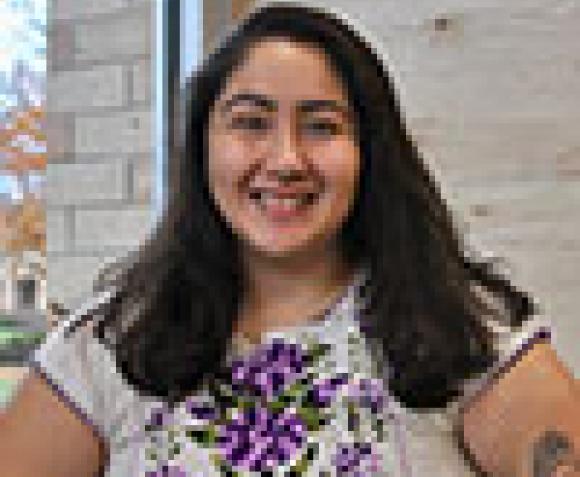Courier Summer 2017
In November of 2014, English literature professor Aaron Moe received permission from Liveright, the E. E. Cummings Trust, and the Houghton Library at Harvard University to begin placing digitized images of the drafts of E.E. Cummings’ (EEC)* poems. Initially, Moe placed roughly 25 images on the E.E. Cummings Society Blog, but needed more time and resources to expand the site.
Early in 2017, Moe received some funding from an alumna donor to acquire nearly 200 more sheets of the drafts. During this time, he began talking with David Carroll, assistant professor of math and computer science, about several digitization project possibilities at Saint Mary’s — along with Janet Fore, library director, and Sarah Noonan, assistant professor of English literature.
To begin the process, Moe and Carroll decided to pursue a CoSTAR grant that would have three aims: 1) revamp the interface for the digital images and add the 200 additional sheets of drafts; 2) create a prototype of an online concordance that focuses (for now) on EEC's i: six nonlectures that he delivered at Harvard in 1952-53; and 3) work with other faculty to apply to a National Endowment for the Humanities (NEH) grant for additional digitization projects at Saint Mary’s.
The project to get the images moved forward as Carroll wrote a script to convert the PDFs from Harvard into individual JPEGs. Moe found a more modern slider to display the images, and designed the online concordance to harmonize with the EEC Society Blog, and then Carroll took the design and made it a reality. Carroll also used Tesseract (an optical character recognition software, or OCR for short) in order to take a scan of the nonlectures and turn it into a text file that is searchable. He wrote Python scripts to run the search functions of the concordance (Moe swears he speaks parseltongue). After building it on his own server, Carroll moved it over into Reclaim that hosts the WordPress site for the EEC Society Blog.
It has been a dream of Moe’s, for nearly a decade, to get the drafts of EEC's poems circulating in online spaces as well as to create an online concordance for his work. Working together, Moe and Carroll turned these dreams into a reality, and it has been one of the most memorable projects of Moe’s career.
The project has been thrilling for Carroll, too, to use his knowledge and skills in order to deepen the impact of the EEC Society Blog.
Moe and Carroll both plan on engaging students with the interdisciplinary approach that digitization projects call for in the near future, and in the fall, they are working together as digital fellows to further expand the concordance of EEC's works.
“The EEC project circulates archival material that otherwise one would have to travel to Harvard to see. And so, scholars, teachers at all levels, students, enthusiasts, and general readers now have access to the drafts that can revolutionize how one understands and reads EEC's poetry,” Moe said.
Moe sees this kind of work to be that of a "caretaker" of a poet's life's work. He said, “Being a caretaker of EEC's work means finding ways to continue to engage a readership with that work.”
At digital projects continue at Saint Mary’s, students in both the humanities and in computer science benefit. Instead of having a hypothetical project, students in computer science will quite possibly have on-going problems to solve and projects to work on.
“Nothing can substitute learning how to problem solve on an actual, authentic problem. Students in the humanities will have the opportunity to explore the implications of reading and writing in a print/digital hybrid world,” Moe said.
Moe sees this research project as one way for Saint Mary’s to remain current and competitive, by engaging students with how literary studies has changed in light of the digital revolution.
* For the capitalization of EEC, see Norman Friedman's "Not 'e. e. cummings'" and "Not 'e. e. cummings' Revisited".

